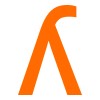
A Study in Chinese Patients to Compare How Tenecteplase and Alteplase Given After a Stroke Improve...
StrokeThis study is open to Chinese adults who had an ischaemic stroke, which means that blood vessels in the brain are blocked. To resolve blood clots, people in the study get either tenecteplase or alteplase within 4 hours and 30 minutes after stroke. The purpose of this study is to compare how tenecteplase and alteplase improve peoples' recovering of physical activity. Alteplase is standard of care. Tenecteplase is a modified variant of alteplase that is easier to administer and is approved to treat heart attack. This study is to find out whether tenecteplase is as good as alteplase in people with ischaemic stroke. Participants are equally put into 2 treatment groups by chance. Participants in one group get tenecteplase as a single injection into a vein. Participants in the other group get alteplase as an injection into a vein (10% of the dose) and the remainder as an infusion over 1 hour. Participants are in the study for about 3 months. They are in the hospital for the first week after treatment. Then they visit the study site 1 and 3 months after treatment. At these visits, peoples' ability to independently carry out daily activities is assessed. Scores for physical activity are compared between both treatment groups. The doctors also regularly check the general health of the participants.

Impact of Physical Therapy of Dysphagia on Preventing Pneumonia in Acute Stroke Patients
StrokeAcute2 moreTo investigate the impact of physical therapy intervention of dysphagia on preventing pneumonia in acute stroke patients

Improving Stroke Care in North-Norway Through Artificial Intelligence
Ischemic StrokeProspective observational multi-center intervention study. The study aims to evaluate whether an artificial intelligence (AI) support tool for radiological image processing (StrokeSens, Circle NVI) can accelerate decision making and increase detection rate in patients with an acute ischemic stroke caused by intracranial large vessel occlusion (LVO) or medium vessel occlusion (MeVO) in Northern Norway. Relevant outcomes will be compared between centres with and without available software during the study period.

MidregiOnal Proatrial Natriuretic Peptide to Guide SEcondary Stroke Prevention
StrokeIschemicThe present trial is addressing the question if a biologically distinct subgroup of ischemic stroke patients without known atrial fibrillation at admission, selected by a cut-off level of MRproANP concentration, which represents a underlying increased risk of cardiac thrombogenicity, benefits from direct oral anticoagulation (DOAC) within 7 days of symptom onset versus standard of care (antiplatelet) as preventive treatment.

Hemodynamic in Postreperfusion Period and Functional Recovery in Acute Ischemic Stroke Patients...
Acute Ischemic StrokeIntracranial HemorrhageThe investigators are suggtesting that lower goals of systolic blood pressure after intravenous thrombolysis may reduce the risk of hemorrhagic complications and improve functional outcomes after acute ischemic stroke.

Advanced Cardiac Imaging To Predict Embolic Stroke On Brain MRI: A Pilot Study
Atrial FibrillationStroke6 moreDemonstrating the pathophysiological link between Left Atrial (LA) and Left Atrial Appendage (LAA) pathology and embolic strokes in non-Atrial Fibrillation (AF) individuals represents a major advance in stroke prevention strategies. Instead of relying on non-specific criteria for stroke risk assessment, the investigators propose to identify individuals with high-risk of embolic stroke using imaging criteria that reflect the underlying pathophysiology of embolic stroke of cardiac origin. the investigators can therefore lay the groundwork for future anticoagulation strategies for stroke prevention beyond AF.

Clinical Investigation to Evaluate the Suitability of StrokeWave in Distinguishing Haemorragic From...
StrokeIschemic1 moreThis is a pilot, monocentric clinical investigation to evaluate the suitability of StrokeWave in distinguishing haemorragic from ischaemic strokes. The StrokeWave is a microwave device which employs a novel technique to generate images by processing very low power (<1mW) microwaves. The trial design has been developed in order not to interfere with thw standard diagnostic approach used for the hyperacute stroke patients, nor to modify the usual standard timing of the routine assessment.

Altering Activation Patterns Post-stroke
StrokeMuscle Spasticity1 moreThis study evaluates a new rehabilitation approach for stroke survivors in the chronic phase of recovery in which the combination of drug therapy (cyproheptadine) and active movement practice (AMP) is used to encourage increased voluntary muscle control and strength.

Perfusion Imaging Evaluation for Ischemic Stroke on 6-24 Hours Undergoing Endovascular Thrombectomy...
StrokeAcute Cerebral InfarctionThis study aims to evaluate the hypothesis that thrombectomy devices plus medical management leads to superior clinical outcomes in acute ischemic stroke patients at 90 days as compared to medical management alone in appropriately selected subjects with the Target Mismatch Profile and an MCA (M1 and M2 segment) or ICA occlusion or BA who have endovascular thrombectomy initiated between 6-24 hours after last seen well.

Incline Training to Personalize Motor Control Interventions After Stroke
CVA (Cerebrovascular Accident)This study will evaluate the use of incline and decline treadmill training to address specific motor control deficits identified within different post-stroke walking patterns.
